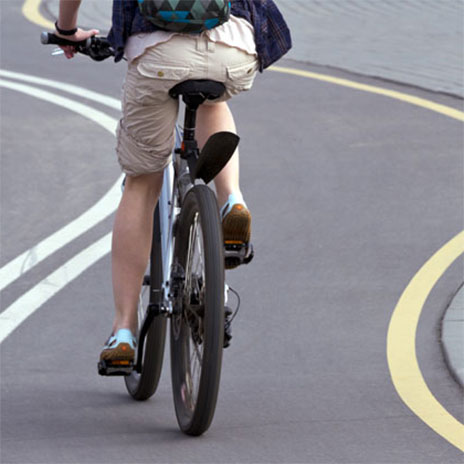
- Afrikaans
- Albanian
- Amharic
- Arabic
- Armenian
- Azerbaijani
- Basque
- Belarusian
- Bengali
- Bosnian
- Bulgarian
- Catalan
- Cebuano
- Corsican
- Croatian
- Czech
- Danish
- Dutch
- English
- Esperanto
- Estonian
- Finnish
- French
- Frisian
- Galician
- Georgian
- German
- Greek
- Gujarati
- Haitian Creole
- hausa
- hawaiian
- Hebrew
- Hindi
- Miao
- Hungarian
- Icelandic
- igbo
- Indonesian
- irish
- Italian
- Japanese
- Javanese
- Kannada
- kazakh
- Khmer
- Rwandese
- Korean
- Kurdish
- Kyrgyz
- Lao
- Latin
- Latvian
- Lithuanian
- Luxembourgish
- Macedonian
- Malgashi
- Malay
- Malayalam
- Maltese
- Maori
- Marathi
- Mongolian
- Myanmar
- Nepali
- Norwegian
- Norwegian
- Occitan
- Pashto
- Persian
- Polish
- Portuguese
- Punjabi
- Romanian
- Russian
- Samoan
- Scottish Gaelic
- Serbian
- Sesotho
- Shona
- Sindhi
- Sinhala
- Slovak
- Slovenian
- Somali
- Spanish
- Sundanese
- Swahili
- Swedish
- Tagalog
- Tajik
- Tamil
- Tatar
- Telugu
- Thai
- Turkish
- Turkmen
- Ukrainian
- Urdu
- Uighur
- Uzbek
- Vietnamese
- Welsh
- Bantu
- Yiddish
- Yoruba
- Zulu
Dec . 04, 2024 09:37 Back to list
how to adjust back derailleur on mountain bike
How to Adjust the Back Derailleur on a Mountain Bike
Adjusting the back derailleur on your mountain bike may seem daunting, but with a bit of patience and the right tools, it can be done easily. A well-tuned derailleur ensures smooth shifting, which is crucial for efficient riding on varied terrains. Here's a step-by-step guide to help you through the process.
Tools You Will Need
Before you begin, gather the necessary tools 1. Phillips screwdriver 2. Allen wrenches (usually a 4mm or 5mm) 3. A bike stand (optional but recommended) 4. Chain lubricant
Step 1 Inspect the Derailleur
Start by inspecting your derailleur, chain, and cassette for wear and tear. Look for bent brackets or broken components. Any damage will need to be addressed before you can proceed. Ensure that the derailleur hanger, which connects the derailleur to the bike frame, is straight.
Step 2 Check Cable Tension
The derailleur is operated via a cable, and proper tension is vital for smooth shifting. To check the cable tension - Shift the bike into the highest gear (smallest chainring in the front and the largest cog in the rear). - Observe the tension on the cable. If it's loose, you may need to tighten it.
To adjust the cable tension, locate the barrel adjuster on the shifter or the derailleur itself. Turn the barrel adjuster clockwise to increase tension and counterclockwise to decrease it. Small adjustments are often sufficient.
Step 3 Set the Limit Screws
The derailleur is equipped with limit screws (often marked as H and L). These screws control how far the derailleur can move and prevent the chain from slipping off the cassette.
how to adjust back derailleur on mountain bike

- High Limit Screw (H) Adjust this screw while in the highest gear. Shift to the smallest cog at the rear and make sure the derailleur aligns perfectly with the cog. If the chain is not aligned, turn the H screw clockwise to move it closer, or counterclockwise to pull it away.
- Low Limit Screw (L) Shift to the lowest gear (largest cog). Check if the derailleur can move the chain onto the largest cog properly. Adjust the L screw in the same manner as the H screw until perfect alignment is achieved.
Step 4 Fine-Tune the B-Screw
The B-screw adjusts the distance between the derailleur and the cassette, which is crucial for consistent shifting. While in higher gears, ensure there's a small gap (usually about 3-5mm) between the largest cog and the derailleur's top pulley. Turn the B-screw clockwise to bring the derailleur closer or counterclockwise to move it away from the cassette.
Step 5 Test the Shifting
Take the bike down to a flat area and test the shifting across all gears. Start from low gear, moving up to high gear, and then back down. Listen for any grinding noises or hesitation in shifting, which might indicate misalignment. If shifting is not smooth, revisit the limit screws and cable tension to make further adjustments as necessary.
Step 6 Lubricate and Clean
After successfully adjusting the derailleur, take some time to clean and lubricate your chain and derailleurs. A well-lubed chain will enhance the overall performance of your shifting system and prolong the life of your components.
Conclusion
By following these steps, you can ensure your mountain bike's back derailleur is properly adjusted, leading to improved shifting performance and a better ride experience. Regular maintenance is key to keeping your bike in top shape, so make adjustments as needed and enjoy the trails!
-
The Ultimate Kids' Four-Wheeler Experience
NewsJul.09,2025
-
The Ultimate Guide to Mountain Bikes: Gear Up for Your Ride
NewsJul.09,2025
-
The New Age of Cycling: Electric Bikes for Every Rider
NewsJul.09,2025
-
The Best Kids Bicycles: Ride in Style and Safety
NewsJul.09,2025
-
The Best 3-Wheel Scooters for Kids: Fun, Safety, and Adventure
NewsJul.09,2025
-
Revolutionize Your Ride: Affordable Electric Bikes
NewsJul.09,2025
-
Finding the Perfect Mountain Bike for Every Rider
NewsJul.09,2025



